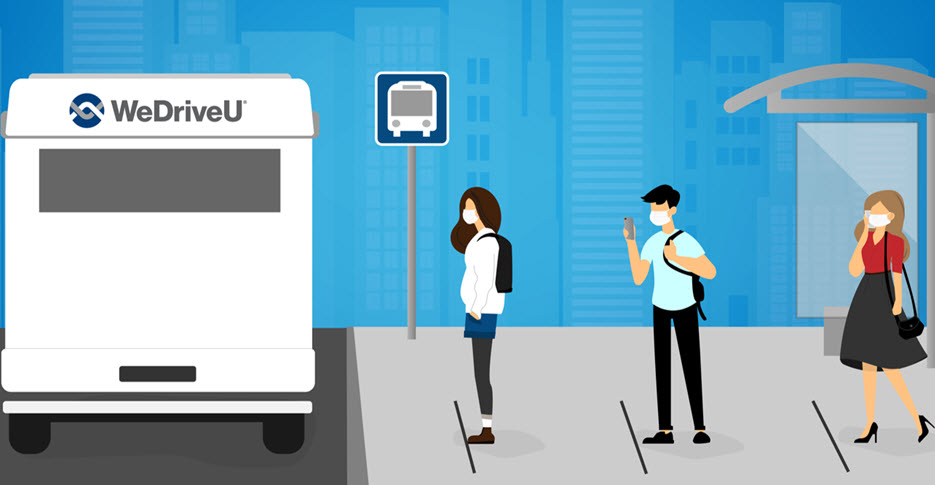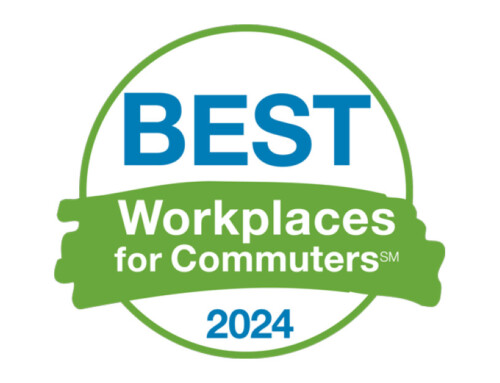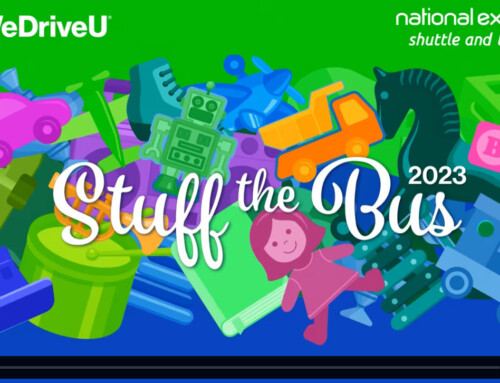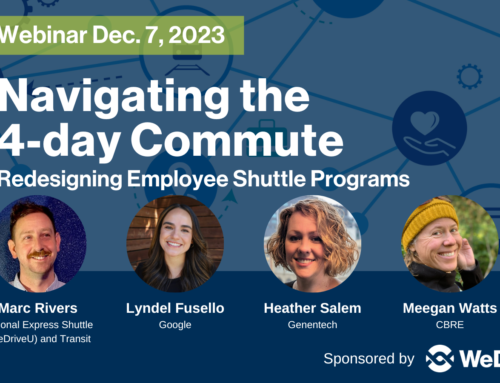Returning to Work: Expanding Commuter Options
As COVID-19 restrictions begin to ease, employers are starting to think about how their employees will get to work.Our team was discussing a recent Wall Street Journal article on this topic by Chip Cutter that explores how commuting challenges—specifically public transportation—may hinder bringing employees back to work.
Cutter discussed his article in a podcast (listen here) that addresses the challenges of socially distancing on subways, trains and buses. He describes how employers are considering other options for getting people to work, like “…private van lines or private bus lines where only 50 percent of the capacity is used.”
The uptick WeDriveU is seeing in inquiries from large employers and TMAs (Transportation Management Associations) signals growing interest in solutions like ours to ease the return to work [the inspiration for our Return to Work Resource Center].
We asked Sean Huonker, WeDriveU’s East Coast Business Development Manager based in New York City, and Tim Wayland, Chief Commercial Officer, what they’re hearing from employers.
What are your biggest #returntowork takeaways?

Sean Huonker, East Coast Business Development Mgr.
Sean: It’s interesting how transportation ties into the broader initiative of reshaping large workplaces: one-way hallways, staggered shifts, and boxed lunches vs. cafeterias. Employers acknowledge the commute is a central part of the workday, even if employees are not on the clock. Each organization I talk to is different, and I enjoy creating custom transportation programs that fit their needs.
What challenges do organizations face?
Sean: While telecommuting is a great option for some, needing employees physically present at a workplace is an unavoidable reality for many organizations. This is as true for healthcare and frontline workers as it is for other industries, such as financial services, insurance and media. Getting to or from work shouldn’t be the most anxiety-ridden part of your day.
Getting to or from work shouldn’t be the most anxiety-ridden part of your day.
What’s the answer?
Sean: It sounds cliché, but there isn’t one right answer. Worksites need a mix of initiatives. We don’t want to see a surge in the number of single-occupancy vehicles (SOVs) commuting into major business centers, clogging already congested roads and infrastructure. Here in NYC, or DC, for example, there’s an extensive mass transit network, but a middle ground between that and driving alone could be employer-sponsored programs like commuter shuttle buses, vanpools, carpools, and biking to work – multimodal options that have proven successful with large companies, universities and hospitals we serve across the U.S.
…a middle ground between that and driving alone could be employer-sponsored programs like commuter shuttle buses, vanpools, carpools, and biking to work
Tim: I’d add that employers also need to account for employees who don’t own cars and don’t feel comfortable taking public transportation. If it’s not a viable option for your workforce for the time being, these are ways to supplement what you offer.
Do these approaches have value in other U.S. regions?
Tim: Yes, these are relevant for all transit-dependent urban centers, such as New York City, Boston, Chicago, Washington, D.C. and others.
What does it take to put a private shuttle system in place?
Tim: It can be a fast process and we’ve started many programs across the U.S. in as little as weeks vs. months. We’re not a typical bus company and have a flexible and scalable infrastructure which allows for fast and versatile implementations.
While there’s a lot for Workplace Services, Facilities, Commercial Real Estate and HR professionals to think about as Coronavirus recovery begins, these are compelling options to ensure the safety, well-being and comfort of employees resuming their commute back to work.
Let us know what you think
Like to brainstorm with Tim, Sean and the team? Reach out to us here.
Learn about WeDriveU shuttle services in New York City, Washington, D.C., Boston, Chicago and other regions.
More Resources
Visit the WeDriveU Return to Work Shuttle Resource Center for on-demand webinars, industry research and tips.







